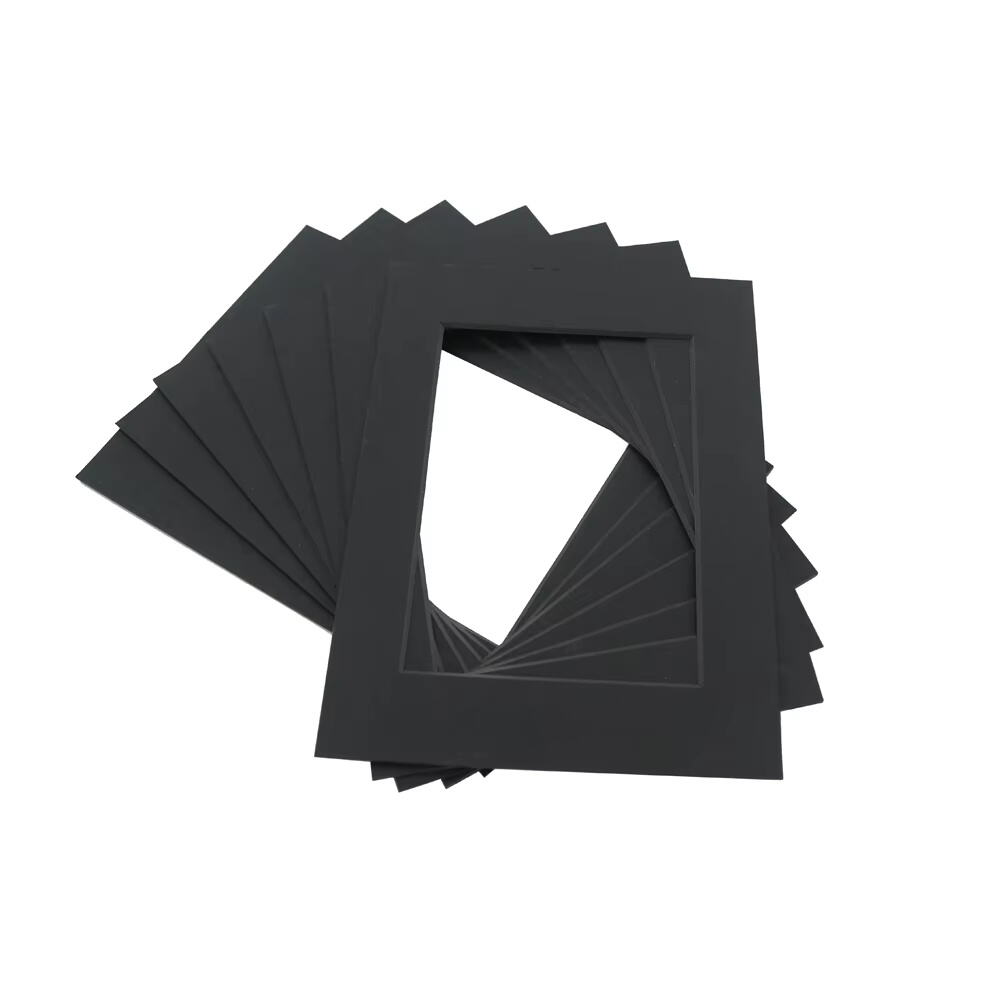Understanding Acid-Free Boards
For preserving artworks and photos, acid-free boards really matter. Regular cardboard contains acids that slowly eat away at paper and cause yellowing over years. The good news is acid-free alternatives have been made without those damaging chemicals. These special boards keep their pH balanced so they won't harm whatever gets stored on them. Museums and galleries rely heavily on this feature when displaying valuable pieces long term. Art conservationists swear by them because nobody wants their precious collections turning brown after decades in storage.
There are several kinds of acid free boards out there, each designed for different purposes. Take the backing board used in framing as an example it keeps artwork stable and protected against deterioration over time. Mounting boards work great for attaching photos and prints without causing harm, and then there's foam board which weighs next to nothing but still holds up well for display mounts or building models. All these options have their own strengths, though they share one important quality they help protect delicate items from the damaging effects of acids that can ruin paper and other sensitive materials if left unchecked.
Using acid free materials really matters if we want our precious stuff to last longer. Artworks and photos stuck onto acidic boards tend to break down over time, turning yellow and getting brittle. That's why many collectors switch to acid free alternatives which actually extend how long these valuable items stay looking good without losing their original quality or getting damaged by environmental factors. For anyone serious about preserving their collection, investing in proper acid free mounting boards isn't just smart it's essential for keeping family treasures intact across multiple generations.
Handling Tips for Acid-Free Boards
Taking good care of acid free boards really matters if we want them to last. When handling these boards, it's best to have clean hands so no oils or grime gets transferred onto the surface. The natural oils on our skin actually mess with the paper quality over time, leaving behind those annoying smudges and stains nobody wants. Just keeping this basic tip in mind goes a long way toward making sure the boards stay in top condition. After all, that's why they exist in the first place – to protect valuable artwork collections and important documents from deterioration caused by regular exposure to acidic materials.
Handling acid free boards requires some care and attention to detail. The best approach is to always grab them by the edges instead of touching the actual surface itself. This becomes even more important when working with bigger sheets since they're more prone to damage. Grabbing with two hands helps keep everything balanced and stops those frustrating bends or warps that can ruin hours of work. These simple methods really make a difference in preserving not just the board itself but also whatever valuable artwork or documents might be resting on top of it. A little extra caution goes a long way toward keeping things looking professional and intact over time.
Most professionals working with acid-free boards suggest wearing protective gloves and setting them down on clean, flat surfaces. Gloves stop those tiny bits of skin oil from getting onto the board, which can cause problems later on. When preparing or laying down materials, it makes sense to put the board somewhere really clean and smooth so nothing scratches or damages the surface. Taking these extra steps keeps the board in good condition for longer periods of time, which matters a lot when someone is framing valuable artwork or doing delicate mounting work where every detail counts.
Storage Best Practices for Acid-Free Boards
Getting the storage right for acid-free boards, including those foam board varieties, makes all the difference when it comes to avoiding damage down the road. For best results, keep these materials somewhere where the temperature stays steady around 65 to 70 degrees Fahrenheit, which translates to roughly 18 to 21 Celsius on the other scale. Humidity levels should hover between 30 and 40 percent too. Why does this matter? Well, if things get too damp, the boards can start to warp or worse yet, grow mold. Maintaining consistent conditions isn't just about keeping the boards looking good either. It actually extends how long they'll last and ensures whatever artwork or important papers are attached remain protected over time. Most people forget that proper storage isn't optional but essential for preserving valuable items.
Storing boards flat helps prevent any physical damage while they're kept in storage areas. Flat positioning stops them from bending which keeps their overall structure intact over time. When there just isn't enough room for laying everything out flat, going vertical works too but needs some extra care. Important thing here is adding protection between items. Acid free plastic sleeves work great or sometimes people use stiff cardboard dividers instead. These barriers stop surfaces from rubbing against each other and give needed support so nothing gets bent or scratched. Most collectors find this approach makes a big difference in keeping their collection looking good for years down the road.
Alongside proper physical storage techniques, going for acid-free materials like special containers or protective sleeves makes all the difference when trying to keep things stored properly. The good news is these materials don't contain those nasty chemicals that would slowly eat away at paper boards if left unchecked. When shopping around for storage solutions, look specifically for items labeled as archival quality. These will help preserve whatever's inside much longer while keeping unwanted reactions between materials to a minimum. Putting these tips into practice actually protects not just how long your acid-free backing boards last but also maintains their quality for framing projects and similar applications where material stability matters most.
Avoid Common Mistakes with Acid-Free Boards
Acid free boards won't last long if we make some basic errors while handling them. Bending or causing any sort of physical damage during regular use or when putting them away is a big no no. Warping becomes a real issue for many people who don't store their boards properly over time. The best approach? Keep those boards lying completely flat whenever possible. If space is tight, vertical storage works too but needs proper support throughout. Flat storage keeps everything looking good and stops those annoying curls from forming along the edges that nobody wants to deal with later on.
Temperature extremes and humidity fluctuations are major concerns when storing acid-free materials. Foam boards and mounting boards made from acid-free stock will start breaking down or losing their effectiveness when subjected to wild temperature swings or overly damp conditions. The ideal storage area should stay pretty consistent, ideally hovering around 70°F give or take a few degrees, while keeping moisture levels somewhere between 30% and 50% relative humidity. These conditions help keep the boards in good shape over time without them warping or becoming unusable. Most collectors find that maintaining these environmental standards makes all the difference in long term preservation efforts.
Checking storage conditions on a regular basis and giving those boards a good once over for damage really matters if we want them to last. Keep an eye out for things like color fading, mold spots forming, or any kind of physical wear and tear showing up. When problems pop up early, fixing them while they're still small goes a long way toward keeping board quality intact. The whole process helps spot environmental shifts before they become big trouble for stored materials. Anyone who takes time to implement these simple checks will find their acid free boards staying in better shape much longer than otherwise expected.
Conclusion: Summarize Best Practices and Emphasize Their Importance in Maintaining Board Quality
Keeping acid free boards in good shape requires some basic care routines. Handle them gently to avoid scratches or cracks, especially around the edges where damage tends to start. Storage matters too – find a spot away from extreme heat or cold, and keep moisture levels steady. Nobody wants their precious art collection ruined by warped corners or yellow spots developing over years. A quick monthly check goes a long way toward catching problems early. When properly maintained, these boards protect whatever's displayed on them whether it's family photos, professional work samples, or valuable collectibles. Most framers will tell anyone who asks that proper storage makes all the difference when preserving delicate materials for decades instead of just a few years.
Following these good practices brings real advantages over time. When items are properly maintained, they last longer without needing replacement, cutting down on expenses and wasting materials. What matters even more is how this care keeps art looking its best, since exposure to bad conditions and accidental harm gets reduced significantly. Maintenance isn't just about saving money in the long run either. Boards stay functional for years instead of falling apart after a few months, while the artwork remains intact for future generations to appreciate. Museums and galleries that invest in regular upkeep find their collections maintain value much better than those that neglect basic preservation techniques.
FAQ
What is an acid-free board, and why is it important?
An acid-free board is specially manufactured to have a neutral pH that prevents the degradation and yellowing of materials placed on it. This makes it an essential tool for preserving artworks and photographs over time.
How does an acid-free board differ from regular boards?
Unlike regular boards which contain acids that can damage materials, acid-free boards do not contain these harmful elements, ensuring long-term preservation of the attached art and documents.
What types of acid-free boards are available?
There are various types, including acid-free backing boards for framing, acid-free mounting boards for photographs and prints, and acid-free foam boards for lightweight support.
How should I handle and store acid-free boards?
Handle them carefully by their edges and with clean hands or gloves to prevent contamination. Store in stable temperature and humidity conditions, ideally flat, to maintain their integrity.
Why is it important to check storage conditions regularly for acid-free boards?
Regular checks help detect any signs of damage or environmental changes that could affect the structural integrity of the boards, preserving the quality of both the boards and the attached artwork.

